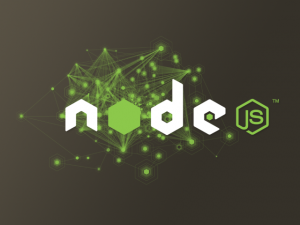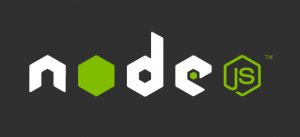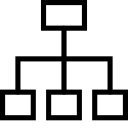 Every ten or so years, a programming language emerges that changes the face of software development. From C++ in the 80’s, to Java in the 90’s, to C# .Net in the 2000’s, each iteration transforms how people work and develop software systems. Node.js is that platform of the 2010’s, combining highly asynchronous development with a wide breadth of plugins to create 50%+ reductions in development time. Its single-threaded execution, high-level of configurability, and large plugin ecosystem make it the ideal platform for high-performance web application development.
Every ten or so years, a programming language emerges that changes the face of software development. From C++ in the 80’s, to Java in the 90’s, to C# .Net in the 2000’s, each iteration transforms how people work and develop software systems. Node.js is that platform of the 2010’s, combining highly asynchronous development with a wide breadth of plugins to create 50%+ reductions in development time. Its single-threaded execution, high-level of configurability, and large plugin ecosystem make it the ideal platform for high-performance web application development.
Continue reading
Tag Archives: Software Sagacity
Node.js Video Chat Tutorial
 The video chat revolution is bringing application interactivity to new frontiers. Whether used to provide real-time communication, improve customer service, or give technical training, the prevalence of high-quality video cameras on smart phones and high-speed Internet access makes video chat applications easy to both build and deploy.
The video chat revolution is bringing application interactivity to new frontiers. Whether used to provide real-time communication, improve customer service, or give technical training, the prevalence of high-quality video cameras on smart phones and high-speed Internet access makes video chat applications easy to both build and deploy.
Continue reading
Share This Article
Cross-domain Node.js Function Calls
 Node.js and AJAX provide a full spectrum of development capabilities that rival the desktop environment. From image editing software to 3D interactive games, many desktop apps have successfully moved from the local machine to the browser. When programming these applications, however, developers often need to work around browser security restrictions, the most frequently encountered limitation being cross-domain function call prevention.
Node.js and AJAX provide a full spectrum of development capabilities that rival the desktop environment. From image editing software to 3D interactive games, many desktop apps have successfully moved from the local machine to the browser. When programming these applications, however, developers often need to work around browser security restrictions, the most frequently encountered limitation being cross-domain function call prevention.
Continue reading
Share This Article
Using Wget with Cookies
 One of the powerful tools available in most Linux distributions is the Wget command line utility. With a simply one-line command, the tool can download files from the web and save them to the local disk. While this capability might initially seem only moderately useful (Why not just use Chrome or Firefox to download the file?) – most Linux servers are managed remotely through a tool called SSH. SSH normally offers only a command line interface without any graphical components, so all the server maintenance needs to be done through the command line. Wget is used constantly throughout the installation process to download files from the Internet and install new programs on the system.
One of the powerful tools available in most Linux distributions is the Wget command line utility. With a simply one-line command, the tool can download files from the web and save them to the local disk. While this capability might initially seem only moderately useful (Why not just use Chrome or Firefox to download the file?) – most Linux servers are managed remotely through a tool called SSH. SSH normally offers only a command line interface without any graphical components, so all the server maintenance needs to be done through the command line. Wget is used constantly throughout the installation process to download files from the Internet and install new programs on the system.
Continue reading
Share This Article
Node.js – EJS Function in Module
 The EJS templating engine is one of the more effective ways to render HTML from Node / Express.js. With an HTML syntax and simple tags for including server-side JavaScript, EJS combines the best of both HTML and Node. While other templating engines such as Handlebars.js can also work with HTML, the EJS format is particularly flexible by enabling the full capability of the JavaScript interpreter in the template body.
The EJS templating engine is one of the more effective ways to render HTML from Node / Express.js. With an HTML syntax and simple tags for including server-side JavaScript, EJS combines the best of both HTML and Node. While other templating engines such as Handlebars.js can also work with HTML, the EJS format is particularly flexible by enabling the full capability of the JavaScript interpreter in the template body.
Continue reading
Share This Article
Implementing Object-level Inheritance in Node.js
 Prototype-based classes in JavaScript and Node.js bring a high level of flexibility to the software architecture. Since objects and classes are fully editable at any point in program operation, the functionality can be extended to implement object-level inheritance at runtime.
Prototype-based classes in JavaScript and Node.js bring a high level of flexibility to the software architecture. Since objects and classes are fully editable at any point in program operation, the functionality can be extended to implement object-level inheritance at runtime.
Continue reading
Share This Article
Node.js – Adding comments to JSON files
 Due to its tight coupling and interoperability with JavaScript, JSON has become the standard data transfer format for most JavaScript and Node.js applications. As opposed to its primary competitor format XML, JSON is much more compact and efficient for data transfer, and has a direct one-to-one mapping with the memory structures in the code. What JSON doesn’t enable, however, are comments in the JSON files.
Due to its tight coupling and interoperability with JavaScript, JSON has become the standard data transfer format for most JavaScript and Node.js applications. As opposed to its primary competitor format XML, JSON is much more compact and efficient for data transfer, and has a direct one-to-one mapping with the memory structures in the code. What JSON doesn’t enable, however, are comments in the JSON files.
Continue reading
Share This Article
Node.js – Passing Arrays in the Querystring
 One of the enticing attributes of Node.js development is the high level of flexibility offered by the language. Whereas other web application frameworks often have more stringent and developed patterns for development tasks, Node is more of a Wild West, where the recommended implementation can be anyone’s game. One of those open-ended tasks is passing arrays through the Querystring.
One of the enticing attributes of Node.js development is the high level of flexibility offered by the language. Whereas other web application frameworks often have more stringent and developed patterns for development tasks, Node is more of a Wild West, where the recommended implementation can be anyone’s game. One of those open-ended tasks is passing arrays through the Querystring.
Continue reading
Share This Article
PHP, Be Not Proud
 Over the years, PHP has been instrumental to progress in the field of web development. As one of the early pioneers of server-side web scripting, the PHP language grew to become the dominant programming language of open-source web applications. Its free and open-source codebase made it the default programming language on Apache and Linux, and the large number of excellent web applications built on PHP will secure its existence for at least the next fifteen years.
Over the years, PHP has been instrumental to progress in the field of web development. As one of the early pioneers of server-side web scripting, the PHP language grew to become the dominant programming language of open-source web applications. Its free and open-source codebase made it the default programming language on Apache and Linux, and the large number of excellent web applications built on PHP will secure its existence for at least the next fifteen years.
Continue reading
Share This Article
Node.js – Dynamically Loading EJS Templates
 Node.js offers a powerful engine for high-performance web development. One of the challenges with the stock Express distribution, however, is it’s low-quality default templating system. Jade is littered with obscure syntax, and often requires manual conversion from HTML templates in many development workflows. Luckily, installing the EJS templating system is relatively easy, and developers can reap dividends in increased productivity throughout the lifecycle of the software.
Node.js offers a powerful engine for high-performance web development. One of the challenges with the stock Express distribution, however, is it’s low-quality default templating system. Jade is littered with obscure syntax, and often requires manual conversion from HTML templates in many development workflows. Luckily, installing the EJS templating system is relatively easy, and developers can reap dividends in increased productivity throughout the lifecycle of the software.
Continue reading







